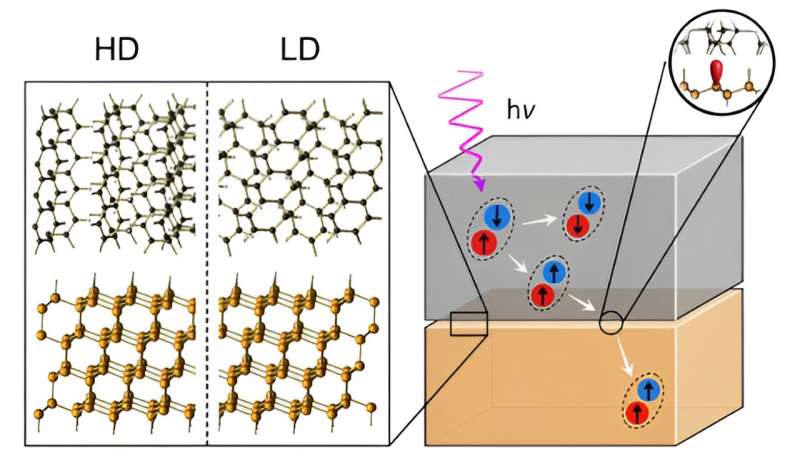Phys.org February 20, 2024
Photovoltaics offers a large potential for the supply of clean and renewable energy. Silicon solar cells used for this purpose have efficiency limits. One reason for this is that some of the energy from short-wave radiation is not converted into electricity, but into unwanted heat. Through computer simulation researchers in Germany showed that to increase the efficiency, the silicon solar cell could be provided with an organic layer, for example made from the semiconductor tetracene. Short-wave light is absorbed in this layer and converted into high-energy excitons. These excitons decay in the tetracene into two low-energy excitations. In the case of the silicon tetracene interface, the defects are essential for the rapid energy transfer. If these excitations can be successfully transferred to the silicon solar cell, they can be efficiently converted into electricity and increase the overall yield of usable energy… read more. TECHNICAL ARTICLE

Scheme showing part of a singlet fission-sensitized silicon solar cell… Credit: Phys. Rev. Lett. 132, 076201,16 February 2024